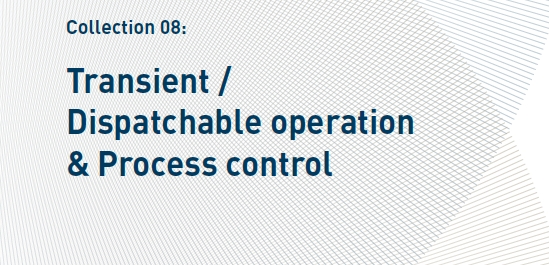4. Demonstrating flexible operation of the Technology Centre Mongstad (TCM) CO2 capture plant (2019)
Mai Buia,b, Nina E. Fløc, Thomas de Cazenovec, Niall Mac Dowella,b,*
aCentre for Process Systems Engineering, Imperial College London, South Kensington, London SW7 2AZ UK bCentre for Environmental Policy, Imperial College London, South Kensington, London SW7 1NA UK cTechnology Centre Mongstad (TCM), 5954 Mongstad Norway *Corresponding author

International Journal of Greenhouse Gas Control 93 (2020) 102879
1750-5836/ © 2019 Elsevier Ltd. All rights reserved.

This study demonstrates the feasibility of flexible operation of CO2 capture plants with dynamic modelling and experimental testing at the Technology Centre Mongstad (TCM) CO2 capture facility in Norway. This paper presents three flexible operation scenarios: (i) effect of steam flow rate, (ii) time-varying solvent regeneration, and (iii) variable ramp rate. The dynamic model of the TCM CO2 capture plant developed in gCCS provides further insights into the process dynamics. As the steam flow rate decreases, lean CO2 loading increases, thereby reducing CO2 capture rate and decreasing absorber temperature. The time-varying solvent regeneration scenario is demonstrated successfully. During “off-peak” mode (periods of low electricity price), solvent is regenerated, reducing lean CO2 loading to 0.16 molCO2/molMEA and increasing CO2 capture rate to 89–97%. The “peak” mode (period of high electricity price) stores CO2 within the solvent by reducing the reboiler heat supply and increasing solvent flow rate.
During peak mode, lean CO2 loading increases to 0.48 molCO2/molMEA, reducing CO2 capture rate to 14.5%, which in turn decreases the absorber temperature profile. The variable ramp rate scenario demonstrates that different ramp rates can be applied successively to a CO2 capture plant. By maintaining constant liquid-to-gas (L/G) ratio during the changes, the CO2 capture performance will remain the same, i.e., constant lean CO2 loading (0.14–0.16 molCO2/molMEA) and CO2 capture rate (87–89%).
We show that flexible operation in a demonstration scale absorption CO2 capture process is technically feasible. The deviation between the gCCS model and dynamic experimental data demonstrates further research is needed to improve existing dynamic modelling software. Continual development in our understanding of process dynamics during flexible operation of CO2 capture plants will be essential. This paper provides additional value by presenting a comprehensive dynamic experimental dataset, which will enable others to build upon this work.
This article is behind a paywall. For futher information: https://www.sciencedirect.com/science/article/abs/pii/S0098135418303818?via%3Dihub
